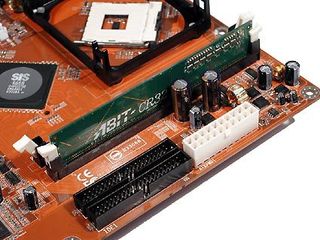Rambus Is Alive: SiS 658 In An Exclusive Test
Conclusion: Memory Interface Still Needs Some Fine-Tuning - Potential For The Rambus Future
A start has definitely been made - now, the SiS 659 chipset has got to follow. This is our conclusion after rigorously testing the SiS 658. Under practical test conditions, the well-equipped Abit SI7 reveals that it does not quite achieve the performance of a top board with the Intel 850E chipset. A particularly interesting aspect are the features relating to the memory support in the BIOS, supporting PC800 thru PC1066 and PC1200 and even PC1333 modules.
Here, however, the question arises as to why no memory mode was possible for 600 MHz (PC1200), despite the functions offered and the special memory. Nevertheless, the Northbridge alone offers a great deal of potential, which will hopefully be better exploited in the SiS 659. In terms of memory performance, however, the first work from SiS clearly lags behind the competition in the form of Intel - regardless of whether the 850E or the 845PE is used for making the comparison. The data transfer rate of just under 3 GB/s trails way behind the theoretically possible rate of 4.8 GB/s.
It is our wish that, apart from the broad range of DDR chipsets on offer, users have at least one technical alternative to choose from. After all, it stimulates the competition, which Intel is doing its utmost to eliminate. If the new SiS 659 chipset can put the soon-to-be-released Intel 875 chipset (code name Canterwood) into its place, then the likes of Asus, Abit & co. ought to muster up the courage to offer rival boards. There are still users out there who cannot adjust to the idea of using a DDR platform for P4. Besides the mass market, there is always that fine niche, even if the nuances are no longer so pronounced.

And perhaps just one more thought on the subject: RDRAM has assumed the role of the "underdog" and is to be regarded precisely as such by the techies.
Stay on the Cutting Edge
Join the experts who read Tom's Hardware for the inside track on enthusiast PC tech news — and have for over 25 years. We'll send breaking news and in-depth reviews of CPUs, GPUs, AI, maker hardware and more straight to your inbox.
Current page: Conclusion: Memory Interface Still Needs Some Fine-Tuning - Potential For The Rambus Future
Prev Page 3D Rendering: Newtek Lightwave 7.5Most Popular

